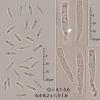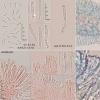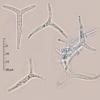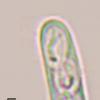
21-12-2025 09:32
Hello.A tiny ascomycete found embedded in wood in

22-12-2025 00:47
Patrice TANCHAUDBonsoir, récolte à proximité du milieu dunaire

21-12-2025 21:32
Pol DebaenstHello, Garden, Burgweg 19, Veurne, BelgiumOn 10/1

21-12-2025 21:40
Isabelle CharissouBonjour, j'aimerais connaitre les références de

21-12-2025 21:31
Pol DebaenstHello, Garden, Burgweg 19, Veurne, BelgiumOn 10/1

21-12-2025 21:31
Pol DebaenstHello, Garden, Burgweg 19, Veurne, BelgiumOn 10/1

20-12-2025 23:08
Patrice TANCHAUDBonsoir, récolte sur sol sablonneux dans l'arri�

20-12-2025 15:47
Mirek GrycHi.These grew on pine wood that was heavily covere
Hi to the Orbilia lovers
This nice species was found on the inner bark of Eucalyptus camaldulensis lying on the ground at the SW Spain, exactly at the place named Cuestas de Torreseca, Jarandilla de la Vera (Cáceres) Spain, 40º 03'48.59" N; 5º 35'22.22" O, 363 m. The sessile ascomata 0.4-0.9 mm in diameter have conspicuous glassy processes and the short 8-spored asci have the four lower spores reversed.
I feel it is close to albidorosea buy I'd like to know your opinion
Thanks in advance

Yes, this Orbilia fits well the other samples of this species from Spain, in my opinion.
Can you tell me the date and collector, also the herbarium number? If you wish you can send me the plates by mail. It is funny that this species is so far found in Spain on Australian substrate only. In Australia we had it on Acacia, Jacksonia and Eucalyptus.
Was it a log or branch? On the moist ground or exposed? Detached bark?
Thanks!
Zotto
Hi Zotto
The ascomata were found by me on dettached pieces of bark lying on the ground in a relative moist place. The date was february 28 and the material is keeped in my herbarium under ERD-6658. I'll send you my pics.
This fungus grew together with another still not studied orange species. Among the ascomata there were tri-arms conidia that perhaps belong to any of the two fungi...
Thanks a lot

Please keep me informed about the orange fungus.
Hi Zotto
As I said you yesterday, among the ascomata of albidorosea grew few others of an orange Orbilia not well preserved that I could no to study. No free ascospores I have seen. Only a few ovoid ones inside the asci. Their paraphyses are inflated and with a gel cap. But nonetheless I feel you can to identify this other Orbilia.
The showed three-arms conidia are somewhat under this other orange Orbilia rather than albidorosea.

The orange Orbilia is not easy. The spores look mature because their SB is very long and uncinate, and theiy measure 5-6 x 2.3-2.5 from the scale. This is a bit too narrow for O. gambelii but I have hardly another suggestion. Goog would be to see whether SCBs are in the excipular cells, and to see some paraphyses.
I'll try it, but ii will be not easy
Thanks!





